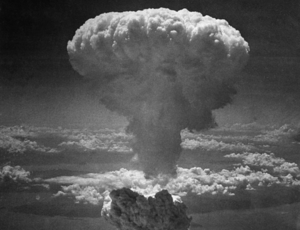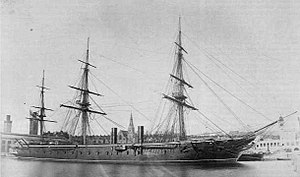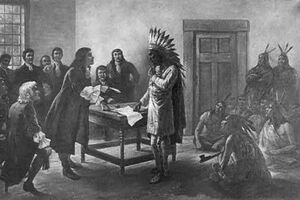Modern Era
This article is a work in progress. Any information here may not be final as changes are often made to make way for improvements or expansion of lore-wise information about Gentu. Please comment on this article's talk page to share your input, comments and questions. Note: To contribute to this article, contact User:Philimania. |

| Part of a series on the |
| History of Gentu and Gentish human history (Hodiernus epoch) |
|---|
| ↑ before Homo (Septun epoch) |
|
Prehistorical Era (one-era three-age system) |
|
| Ancient Era |
|
| Antiquity Era |
|
| Middle Era |
|
| Modern Era |
|
| ↓ Future |
The Modern Era, also known as the Contemporary Era (not to be confused with the Contemporary Age), is the period of human history that runs from 1589 to the present day. The era is divided into 3 ages: the Early Modern Age, Middle Modern Age, and the Contemporary Age.
Variously demarcated by historians as beginning with the start of the Great Enlightenment, historians in recent decades have argued that from a worldwide standpoint, the most important feature of the Early Modern Age was its spreading globalizing character. New economies and institutions emerged, becoming more sophisticated and globally articulated over the course of the period. This process began simultaneously in Oranland and Hesterath although some sources argued it had first begun in the Veragese Collective. It also included the rise of the dominance of the economic theory of mercantilism.
The Middle Modern Age meanwhile, is marked by the beginning of the Industrial Revolution in 1760. The period also saw widespread improvement and development in technology such as the invention of the steam engine and an early telephone. In addition to these improvements, the early half of the Middle Modern Age is regarded by many historians as the Golden Age of Slavery. In Naphtora, the Naphtoran Conquests beginning in 1870 saw the rise of the Anti-Colonial League led by Neo-Calidum in 1873. The Middle Modern Age also included the rise of the relatively new Volkist ideology.
With the end of the Great Games and the start of the Great War in 1918, the Contemporary Age begun. The age was characterized by the end of colonialism with the last major colony gaining independence from XXX in 1983. It also saw the landing of the first man on Cynthia in 1976 and many other technological advances due to competition for influence over Gentu between XXX and XXX. The age also comprised the start of the unofficial Verandere Epoch in 1950.
Early Modern Age
Beginning in 1589, the Early Modern Age is distinguished by the beginning of the Great Enlightenment and its globalizing character.
The Great Enlightenment was triggered by the resurgence of trade between Hesterath, Oranland, Naphtora, the Domicas, Alabon, Flonesia, and Trimeshia. This resulted in the amplified spread of ideas and inventions throughout the continents. In Trimeshia, the Oranish powers colonized the continent with Neragese influence in the east and Palon influence in the west.
In Naphtora, a coup in Neo-Calidum leads to the establishment of the Neo-Calidum Empire in Okjatab of 1623. Under the reign of Sehiman the Great, the Neo-Calidum Empire conquered most of northern Naphtora and some of what remained of the Dardonan Empire. Throughout the Modern Era, Science and learning flourished throughout the empire, but particularly in its early centuries. Neo-Calidum had contributed to the development of hospitals and healthcare, and witnessed advances in medicine, mining and military technology. They also set up a leading observatory in Neo-Odius and had established more than 300 institutes for learning.
The idea of a unified state spreaded to northern Hesterath around the mid 17th century. It resulted in the emergence of the so-called Northern States. They stayed disunited until 1710 with the start of the First Northern War ending with the establishment of the Eudocian Republic in 1716 and Omaran occupation of the western half of northern Hesterath. In the Lowlands, the Zhao continues to flourish due to trade while the Shanji continues its practice of isolationism.
In the Domicas, war erupts between the Paqueon and Neragese Empire in 1602. The war, later known as the War of 1602, spanned the regions of Oranland, the Domicas, Flonesia, and some of Hesterath. It included 7 combatants and was fought over a period of 13 years, ending in Enero of 1615. Although the war ended in a stalemate, it resulted in the Terranist Divide in 1618 which in turn, led to the divide of the Terranist Church into the Paxist and Altenic Church, the Paxists promoting pacifism more strongly then Terranism while Altenics only wanted to be left alone.
Around 1750, the Slave Network was formed. It involved the transportation by slave traders of sold and enslaved Naphtoran people, mainly to the Domicas. The vast majority of those who were enslaved and transported in the Slave Network were people from central and west Naphtora that had been sold by other Naphtoran to Oranish slave traders, while others had been captured directly by the slave traders during frequent tribal wars that occurred. Oranish slave traders gathered and imprisoned the enslaved at forts on the Naphtoran coast and then brought them to the Domicas. The South and Central Domican economies were particularly dependent on labour for the production of sugarcane and other commodities.
TBA
Middle Modern Age
The Industrial Revolution begun in 1760 with the invention of the Spinning frame, ushering in the Middle Modern Age. The age ended in 1918 with the conclusion of the Great Games and the start of the Great War.
The Industrial Revolution, introduced many new inventions to Gentu, such as the steam engine, invented in 1784; the electrical telegraph in 1837; and the telephone in 1876. These new inventions changed lives of many people and helped make communication and transportation easier throughout the many empires.
Hesterath
In Hesterath, in response to a refusal to trade with Seronia-Sotha, they declared war on the Shanji dynasty in 1769 this led to a Serono-Sothan victory and the Shanji was forced to cede a few islands of the coast of Horapon to Seronia-Sotha which would later develop into the Serono-Sothan trading city and colony of Nowy Shoto. In 1772 the Zhao dynasty plunges into civil war after the death of the king. The war eventually concluded with the treaty of XXX in 1786 with the Zhao dynasty divided into north and south: the Easu controlled Yang dynasty in the north, and a Qiu controlled Nanchao dynasty in the south.
In 1778, the Second Northern War begins when the Omaran declares war on the Eudocian Republic. The war eventually ended in 1784 with the Omaran Empire kicked out of northern Hesterath and the establishment of a Neragese colony in the region. 23 years later, in 1807, the Farhad people revolts against the Omaran Empire resulting in the Third Northern War. The war ended in another Omaran defeat, the expansion of the Neragese colony in the region, and the establishment of the Farhad Federation in 1814.
In 1823, the Nanchao dynasty ceded 118 square kilometres of land on the XXX river delta to the Palon Empire as a sign of cooperation. The piece of land would later be known as Hoy Kok. Around the same decade, in 1826, the Yang dynasty would enter a period of isolation just like the Shanji did on Horapon.
Around the mid-19th century, the first steam warship was developed in Nanchao. Although the exact time of its creation and the person who invented it is still a mystery, the new concept spreaded quickly across the known world and completely revolutionized naval warfare. The first large scale usage of this new type of warship was in 1867 at the Battle of the Neragese Channel during the Urgo-Wravian War in Oranland.
In 1874, the Omaran Empire aquired a colony in Naphtora during the Naphtoran Conquests before they were expelled from the continent by the Neragese in 1894.
In 1893, war between the Kingdom of Samin and Cavala breaks out in the southern region of the continent. Although the cause of the war is still a mystery, the most popular theory is that the Cavalan Empire wanted to control trade between Nanchao and Cavala after they had a dispute in Naphtora which ended in a brief war, resulting in a Cavalan victory.
The Goldern Four
The Golden Four was the name given to the 4 continents of North and South Domica, Naphtora, and Oranland. The reason as to why they were called this was because they were the main locations of the Slave Network. The early half of the Middle Modern Age is regarded by many historians as the Golden Age of Slavery.
The Industrial Revolution in Oranland brought about the first factory in 1768, which was a textile factory. Over the next few decades, more and more factories popped up in the countryside resulting in the creation of new settlements which in turn led to the foundation of a more complex social hierarchy. However, these new changes also introduced a larger wealth gap throughout Gentu. Resulting in the rich getting richer and the poor getting poorer. Because of this, the new Volkist ideology developed in the southern principalities of the Veragese Collective.
In North Domica, an expensive war between the Chokaw Confederacy and the Neragese Empire in 1772, known as the Warkhan War, leads to a Neragese victory and the annexation of Chokaw. But because of how costly the war was, the Chokaws and a group of Oranish defectors were able to continue fighting using guerrilla warfare against the Neragese until 1778 when they overthrew the Neragese northern colony in North Domica when Neragon was diverting its resources to Hesterath during the Second Northern War. This eventually resulted in the Chokaw Independence War which ended in 1789 in a Chokaw victory. These chain of events inspired many other people oppressed by the empires in the Domicas to revolt against them.
From 1770 onwards, demonstrations in Oranland organized by workers and miners would occur. Although, none of them were successful, it resulted in the legalization of trade unions in Neragon, Palon, and Seronia-Sotha. Trade unions were organizations of workers who had came together to achieve common goals, such as protecting the integrity of their trade, improving safety standards, and attaining better wages, benefits (such as vacation, healthcare, and retirement), and working conditions through the increased bargaining power wielded by solidarity among workers. However, places that did not act quick enough led to more violent and frequent demonstrations. This eventually led to the Cavalan Revolutionary War in 1812. Inspired by the Chokaw's war, they united the southern Veragese principalities into the Cavalan Republic in 1816.
Due to Cavala's rapid expansion, the Anti-Cavalan Coalition led by the Principality of Serida and Seronia-Sotha was formed in Kunnen of 1816. This prompted the Great Coalition War in 1817 which ended in 1820 in a Decisive Cavalan victory, managing to aquire 2 colonies in Flonesia and 4 in the Domicas. While the Great Coalition War was occuring in Oranland, the indigenous people of South and central Domica and a few Oranish colonies rebelled against Neragese, Palon, and Paqueon rule in a series of conflicts known as the Amplan Wars. With the help from the Atontec Empire, they nearly drove them off the continent. However, several colonies in the Domicas were unable to be captured so although the war ended in a victory in 1826 for the rebellions, a few Neragese, Paqueon (and later Cavalan) colonies survived.
The period of time starting in 1826 was known as the Pax Orania, the timespan which is identified as a period and as a golden age of increased as well as sustained Oranish imperialism, relative peace and order, prosperous stability and technological growth. The period however, ended with the Palon succession crisis of 1843 which led to the War of Palon Succession in Pulungana of 1843. The war would eventually end in 1845 with the Paqueon annexation of the Palon Empire. However, Paqueon occupation of Paloa did not last long as in 1848, war between Cavala and Paqueonia would break out resulting in the Peninsular War which ended in 1852 with the release of Paloa and some minor border changes between Cavala and Paqueonia.
Meanwhile, in eastern Oranland, the Urgan Republic, the successor state of the Urgan Empire declares war on the Kingdom of Wravia in 1859, another successor state. The war saw the first large scale use of the steam warship and saw the involvement of 4 other combatants on both sides of the conflict. Ending in 1869, the war brought about the unification of eastern Oranland and the establishment of the Republic of Wravia.
In 1871, 2 years after the last major war, the Grande Vitrine was held in Cavala. It was an international exhibition which took place in XXX, XXX, from 2 Kunnen to 16 Pulungana, 1871. It was the first in a series of World's Fairs, exhibitions of culture and industry that became popular in the 19th and early 20th century. Modern historians such as XXX believe that without the emergence of World's Fairs, then the Contemporary Age would have been drastically different then what we recognise.
Meanwhile, the Naphtoran Conquests begins in 1870. It consists of the invasion, annexation, division, and colonization of most of Naphtora by 7, later 5 powers, kickstarted by the Neo-Odian Conference in late 1869. This eventually led to the establishment of the Anti-Colonial League in 1873 led by the Neo-Calidum Empire. This resulted in the series of so-called Naphtoran Wars which ended in 1905. By that time, only 6 of the original 13 members of the league survived.
On the 12th of Pulungana 1918, a Briganan Volkist by the name of Adrian Claude assassinates Prince Tobias Ludwig of Seronia-Sotha in XXX in the Protectorate of North Brigano during one of his trips to the protectorate. The assassinations, along with the Great Games, Volkism, imperialism, militarism of Seronia-Sotha and the alliance system all contributed to the origins of the Great War, which began exactly a month and a day after the assassination, with Seronia-Sotha's declaration of war against Brigano. The assassination of Ludwig is considered the most immediate cause of the Great War.
Flonesia
In 1888, a Cavalan explorer Samuel de Héroux discovers the Chainilen Islands. A few years later in 1894, the Cavalan Empire would invade and colonize the islands.
In Aralona, a war between Seronia-Sotha and the Paqueon Empire in 1899 broke out. Ending in 1908, the war resulted in Paqueonia severing ties with Seronia-Sotha. This would eventually lead to Paqueonia forging closer ties with the Kingdom of Brigano.
Contemporary Age
Great War

The Great War offically begun on the 13th of Okjatab 1918 and ended on the 19th of Kunnen 1934. by 1923, its belligerents included much of Oranland and Naphtora, Chokaw, and most of Hesterath, with fighting also expanding into the Domicas, Flonesia, and parts of Trimeshia. It is one of the deadliest conflicts in history, an estimated 50 million people were killed in combat, while over 10 million civilians died from military occupation, bombardment, hunger, and disease. Millions of additional deaths resulted from genocides within the Omaran Empire and the 1929 jenivert pandemic, which was exacerbated by the movement of combatants during the war.
At the beginning of the war in 1918, there were 3 factions: the Cordial Alliance of Cavala, Paqueonia, Brigano, and Wravia; the Grand Coalition of Seronia-Sotha, Urga, Wallia and Saroa, and Batsa; and the Anti-Colonial League of Neo-Calidum, Beja, Rokota, Rwahili, Aranto, and Warasania. In Enero of 1920, Neragon, and late Eudocia would join the Cordial Alliance after Seronia-Sotha invaded the Grand Duchy of Ivo to bypass the Couvreur Line that defended Cavala's border with Seronia-Sotha. On the 4th of Marto 1924, the Omaran Empire joins the Grand Coalition after an Omaran merchant ship was sunk of the coast of Neragon, the following week, the Nanchao dynasty declared war on the Omaran and joined the Cordial Alliance. Just 3 days later on the 15th of Marto, the Yang dynasty to the north and the Farhad Federation joined the Grand Coalition and declared war on Nanchao. In Disemba of 1926, the Chokaw Confederacy declares war on Neragon after a Chokawan warship was sunk by a Cavalan submarine in central Domica.
The war ended in Kunnen of 1934, by that time, an estimated 70 million people soldiers and civilians died. The Godfrey Peace Conference in Pulungana to Disemba the same year imposed various settlements on the defeated powers with the best-known of these being the Treaty of Moreux. The fall of the Eudocian Republic to a Volkist rebellion; and the dissolution of Seronia-Sotha, Yang, the Omaran, Urga, Batsa, led to numerous uprisings and the creation of independent states, including Seronia, Gurbon, and Veragon. In Naphtora, the Treaty of Astes in Enero of 1935 resolved the stalemate between the League and the Cordial Alliance allowed the Anti-Colonial League to claim the colony of Seronia-Sotha but were also forced to give up their holdings in Oranland which resulted in the establishment of Pylos.
Roaring Thirties
TBA
Wettänkrieg
TBA
Post-Wettänkrieg
TBA
21st century
This section needs to be updated. (March 2022) |
TBA
Timeline
TBA
By region
TBA
Maps
TBA





